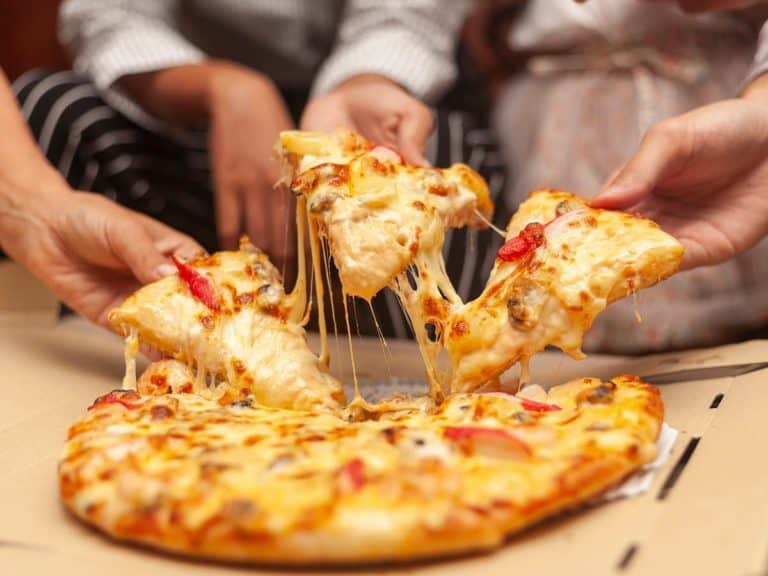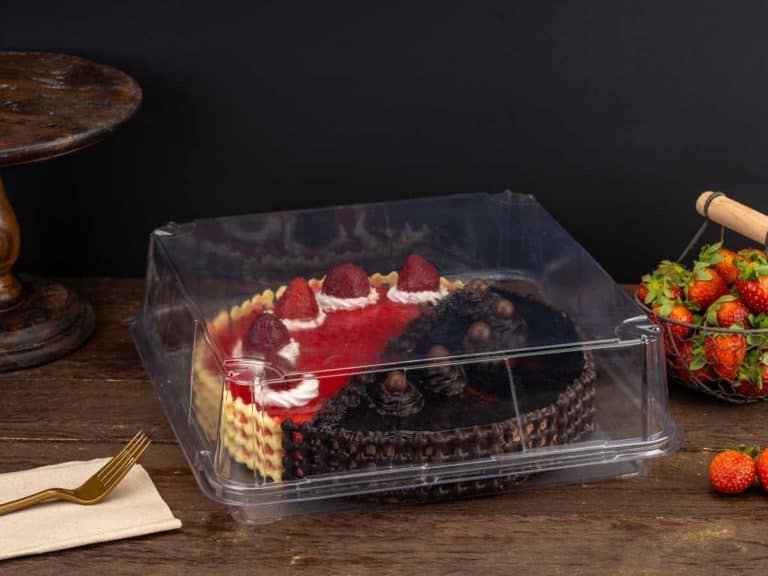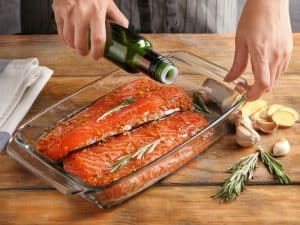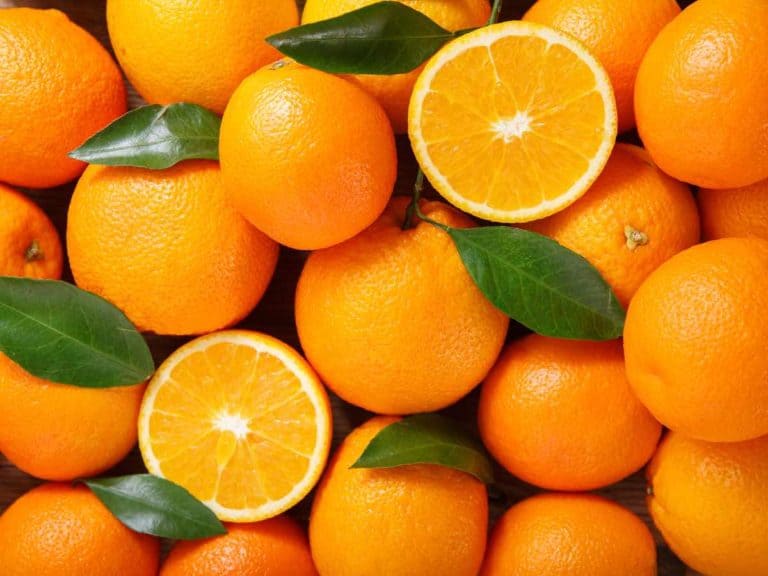Is It Time to Throw Away Your Nonstick Pans?
Love to cook but hate washing up afterward? Yup, me too. That’s why I love my nonstick pans. Coming from a rather traditional family we were rather late adopters of Teflon cookware, but ever since we did we’ve just found them so convenient.
But recently I’ve found stormclouds of worry hanging over my love of nonstick cookware. I’ve been reading here and there of the dangers associated with Teflon and other fluoropolymer coatings, claims they’re carcinogenic, or generate toxic fumes, or even kill my pair of budgies.
Was it time to throw my nonstick pans away?
Initial research for an answer however only managed to confuse me. Some websites unequivocally cry alarm and call for nonstick ware to be ditched. The manufacturers’ sites of course insist on the safety of their products.
It took quite a bit of digging to find a scientifically-backed middle ground. After all the Googling, over a lot of nervously-consumed coffee, I’ve finally found an answer that satisfied me, so I’ll share it with you to save you the trouble.
Long story short: I’ll be keeping most of my nonstick pans for now. However, I’ll be getting rid of a few and will be taking extra care of the keepers to stay safe.
The reason for this caution is because Teflon and other nonstick coatings made of polytetrafluoroethylene (PTFE), such as Xylan, contain harmful substances that are released at very high heat.
PTFE coatings are stable, non-reactive, and nontoxic at temperatures below 450-500 F, but above this the coating will start to degrade then decompose, releasing polymer fumes that can cause a flu-like disease and is toxic to birds, and in older pans, perfluorooctanoic acid (PFOA), which is a suspected carcinogen.
500 F is a temperature I normally shouldn’t reach on my nonstick pans, though, and is the temperature at which you can expect a grease fire to start – and the only grease fires I’ve ever had were in my cast iron steak pans.
However, a damaged Teflon or similar coating can degrade at lower temperatures, because the increased surface area of the coating exposed will react to heat sooner.
To be absolutely safe, it’s a good idea to regularly inspect nonstick pans for scratches and flaking. Nonstick pans with badly scratched coatings should be thrown away. Depending on how much you use nonstick pans, plan to replace them every 3 to 5 years to account for normal wear and tear.
And never, ever, allow a nonstick pan to overheat!
At the same time, though, I’m keeping an eye on the news, and if new studies show even my regular cooking temperatures are unsafe with nonstick ware I’ll ditch them all.
Dangers of PTFE and PFOA
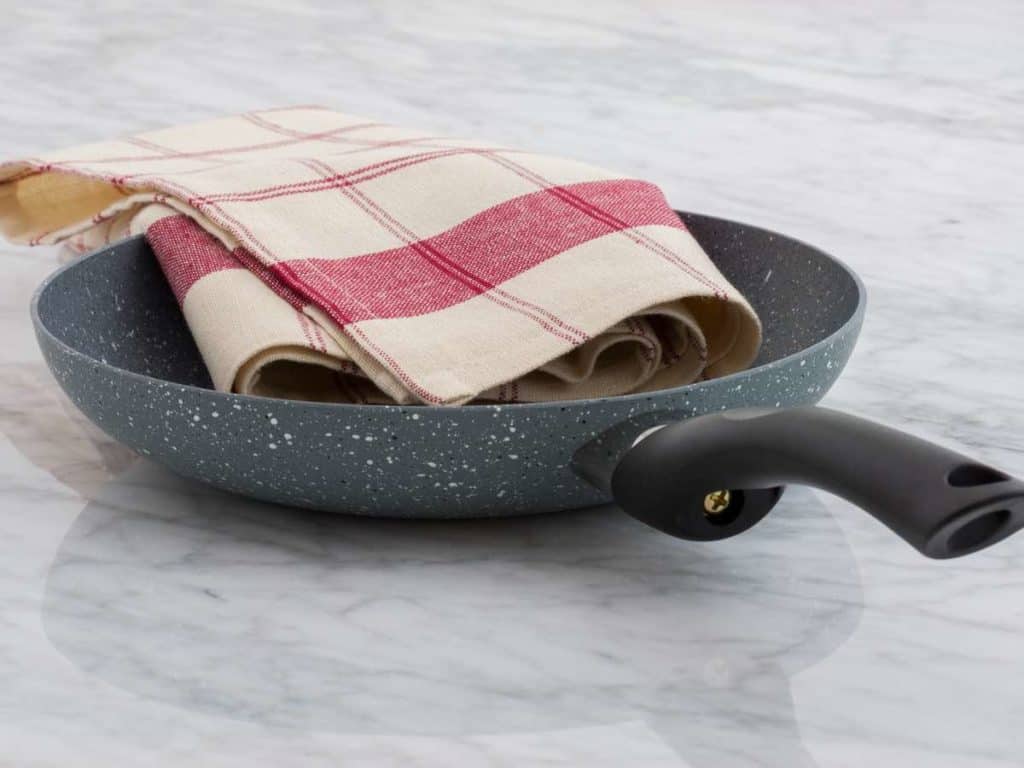
PTFE was discovered by accident in 1938 by American chemist Roy J. Plunkett while he was trying to create a new refrigerant for DuPont.
When one batch didn’t come out of the pressure bottle, he sawed the bottle open to find its insides coated with a white substance that was so slippery it repelled even water. DuPont patented the new compound as Teflon and began producing it for use as an industrial coating.
In the 1950s, French engineer Marc Gregoire used PTFE to lubricate his fishing gear.
His wife Colette, seeing the nonstick properties of the substance in action, suggested that he experiment with coating her cooking pans with it. This turned out to be such a success that they founded the company Tefal in 1956 to manufacture nonstick pans. Nonstick cookware took off in the USA in the 1960s, ushering in a new era of easy, convenient cooking.
PTFE is also used in a wide range of products, about half of all production going not into cookware but into the aerospace and computer manufacture industries, Gore-Tex fabric, even the oil used to lubricate some musical instruments.
However, perfluoroethylene is made from toxic fluorocarbons, and this is where the risk in its usage lies. Up until 2013, PTFE in the United States was manufactured using perfluorooctanoic acid (PFOA).
Medical studies showed PFOA to be associated with kidney and testicular cancer, ulcerative colitis, thyroid disease, high cholesterol, and gestational hypertension. More worrying, PFOA has been found contaminating the water near industrial plants that use it, and traces have even been found in house dust and in blood samples from 98% of the US population.
DuPont voluntarily gave up using PFOA in 2013 for the manufacture of Teflon, and in 2019 an amendment to the Stockholm Convention banned the use of PFOA. 180 countries have since agreed to follow this ban, but some that manufacture nonstick cookware have yet to do so.
Teflon and other PTFE-coated cookware from the USA, the EU, and Japan are now PFOA-free. Some cheaper imports however may not as the countries they’re made in have yet to join or comply with this amendment of the treaty.
DuPont now manufactures Teflon using a chemical called GenX. However, GenX has been found to cause similar health issues as PFOA.
Decomposing PTFE also releases various polymer fumes. When inhaled these can cause a flu-like disease called polymer fume fever. Polymer fume fever typically occurs 4-8 hours after the inhalation of the fumes and is felt as chills, fever, headaches, and sometimes body pain and coughing.
Polymer fume fever is noncontagious and can be treated with over-the-counter antipyretics like Paracetamol. The symptoms can be aggravated for people with existing respiratory problems like asthma.
However, PTFE fumes are very bad news for birds. Because birds breathe much faster than we do, they inhale a greater concentration of these toxic vapors and can easily die from them. Parrots such as macaws, budgerigars, and cockatiels are particularly susceptible.
While DuPont claims Teflon only releases toxic fumes at temperatures above 500 F, a study in 2003 showed that some outgassing already occurred as low as 464 F and that preheating a generic nonstick pan on high heat for only 3 minutes took its temperature to 736 F, and in 5 minutes a Teflon pan reached 721 F.
How to Use Nonstick Pans Safely
Given the information now available, it’s best to exercise caution when using nonstick pans. You should avoid damaging the coating while using and cleaning the pan and make sure never to allow the pan to go beyond the safe temperature.
Extra caution should be observed when preheating.
Below are some tips I’ll be practicing myself from now on:
Use nonstick pans at the recommended temperatures
Never allow a nonstick pan, pot, or baking dish to go over 450 F (232 C).
To make sure you don’t reach this temperature, cook only at low to medium heat with your nonstick ware. Broiling is not recommended on nonstick pans as this requires temperatures above the safe limit.
Use the right pan for the job
Use the right pan for the kind of food and cooking you will do.
Nonstick pans are best for foods cooked at medium or low heat, and for delicate foodstuffs like fish which flake when they stick. If you need to sear or broil, do it on a pan that can take higher heat such as a cast iron pan.
Do not preheat an empty nonstick pan
Never preheat an empty nonstick pan for long or at high heat.
While the traditional wisdom is ‘hot pan, cold oil, food won’t stick,’ this is unnecessary for nonstick ware. Apply a thin coating of oil or butter to your nonstick pan before turning on the heat.
And preheat for only 2 minutes at most.
Do not leave nonstick pans unattended on the stove
Never leave a nonstick pan unattended on a lit stove. This is the leading cause of overheating nonstick pans and the resulting release of polymer fumes.
Do not use scratched or warped nonstick pans
Warping, flaking and scratches lower the temperature at which the coating will degrade.
Scratches and flaking expose more surface area, while warping can loosen the bonds between the coating and the metal of the pan allowing flaking to occur.
Use only silicone, wood, or bamboo utensils
Use only cooking utensils on your nonstick pans that are soft enough not to scratch them.
Wood, bamboo, and silicone utensils are best for this.
Better brands of nylon utensils will also do, but the cheaper ones sometimes melt at lower temperatures than they should so we avoid them now.
Avoid suddenly changing the temperature of the pan
Avoid suddenly cooling a hot nonstick pan, such as by pouring cold water in it or soaking it in cold water. The sudden cooling can warp the pan or cause cracks, which in turn make the nonstick coating more easily damaged by heat.
Make sure kitchen is adequately ventilated
Make sure your kitchen is well-ventilated with a range hood, exhaust fans, and/or open windows to rapidly diffuse fumes, should any be released.
Do not keep pet birds in or near the kitchen
If you have a pet bird keep it far from the kitchen. They’re much more sensitive to polymer fumes than we are, and even a mild outgassing that doesn’t bother us at all can already be harmful to a bird. Some even recommend that if you keep birds, you should replace your PTFE-coated pans with enamel or ceramic pans.
Plan to replace older pans
Lastly, plan to replace older pans, particularly those made before 2013 if you’re in the USA, and those made before 2019 if you live elsewhere or bought imported nonstick cookware. This is to avoid pans still containing PFOA, as Teflon has been PFOA-free only since 2013 and the international PFOA ban only went up in 2019.
Dispose of damaged pans
Nonstick pans that have warped, flaked, or have scratches on the coating should be repaired or disposed of. If you have a nonstick pan in which you’ve had a grease fire, that pan has very likely reached the critical temperature and is no longer safe to use.
How to Keep Nonstick Pans Safe Longer
Avoiding damage to a nonstick pan’s coating not only keeps it safer for use but also keeps its nonstick properties working longer.
Clean nonstick pans gently
Nonstick pans should be cleaned gently, and while most are labeled dishwasher-safe, it’s safest to clean them by hand. Use only soft washcloths or sponges.
Never use a scouring pad, steel wool, or metal brush
Even if you get sticky residue in your nonstick pan, which can happen when you make sweet sticky sauces, never use abrasive cleaning materials to clean them. Instead, you can boil water in the pan to dissolve the residue or leave the pan soaking in hot water.
Dissolve stubborn residues with vinegar and baking soda
Stubborn residues that won’t easily dissolve even with boiling water can be cleaned off by soaking the insides of the pan with warm water, vinegar, and baking soda mix for a day or two. Use equal parts water and white vinegar, and optionally 1-2 tablespoons of baking soda.
Don’t stack nonstick pans
Stacking nonstick pans with other pans can scratch the coatings. If you must stack your pans, separate them with paper or cloth to protect the coating. Better yet, hang up the pans on hooks – they’ll be more accessible that way.
Can Nonstick Pans be Repaired?
Some nonstick pan manufacturers now offer repair and resurfacing services, especially for their higher-end products. If you invested in a high-quality pan that you want to keep, it may be worth the shipping fees to send your pan back to the manufacturer for recoating if it gets scratched, particularly if this is covered by warranty.
There are also websites claiming home repair of nonstick pans is possible using a Teflon resurfacing or similar spray. However on checking the products recommended I found that most, particularly those made by DuPont, now carry an explicit warning not to use to repair or resurface cooking equipment.
My conclusion: if I want my nonstick pan repaired, I believe my family and I are safest if I let an expert, preferably the manufacturer, do it.
Can Nonstick Pans be Recycled?
Recycling options for nonstick cookware are currently limited. Many local recyclers don’t have the facilities to strip off the nonstick coating, which is necessary before recycling the metal.
Damaged nonstick pans should not be sold or donated as they can cause health problems for their buyers or recipients. You can check Earth911’s database to see if any recyclers in your area will accept nonstick ware.
If you want to reuse your damaged nonstick pan, you can have it resurfaced by the manufacturer or have someone sandblast the coating off. The latter will leave you with a regular aluminum pan.
Grinding away the coating should only be done in safe environments and the residues removed in a way that won’t spill the PTFE into the environment, particularly into the watershed.
Alternatives to PTFE-Coated Nonstick Pans
There are several alternatives to PTFE-coated nonstick pans that are also non-stick or low-stick, though none are as residue-repellent as Teflon. You may want to consider them if you absolutely want to avoid the risks associated with PTFE cookware, especially if you keep parrots.
Nonstick Ceramic
The new generation of nonstick ware uses a silicon ceramic glaze on the metal that acts like glass and is almost as stick-free as Teflon. Almost. You will need a little more oil than you use with Teflon ware, but otherwise ceramic nonstick pans are quite stick-free.
The main benefit is they are much more stable and safer even at high heat. The ceramic coating however can crack, so it’s important to never suddenly cool a hot ceramic pan.
Enameled Cast Iron
Enameled cast iron is rather pricey, but like cast iron is extremely sturdy.
You get what you’re paying for though in terms of easy maintenance and freedom from mess, as the glass-like enamel is low-stick, removes the need to season the pan, and keeps the metal from rusting.
The enamel is also safe, as like glass it is non-reactive and will not exude dangerous chemicals even at very high temperatures.
Stainless Steel
Stainless steel is extremely sturdy and mostly rust-proof, and pretty low-stick if well-seasoned and properly preheated before cooking. The main disadvantages to stainless steel are the high price of good quality pans and the need to use more oil.
Cast Iron
Easily the cheapest alternative, as cast iron pans are now quite cheap and you can easily get second-hand ones at flea markets. Cast iron ware is built like a tank and can easily last generations. When properly seasoned, cast iron pans are pretty low-stick, and can handle the high temperatures you’d never use your Teflon pan with.
In a perfect world, I’d probably replace all my nonstick ware with enameled cast iron. An all-Le Creuset kitchen would be great! On a realistic budget, though, I’ll choose enameled cast iron for my highest-heat needs, and keep my nonstick pans only for uses that avoid the critical temperature.
And for the sake of the kids and the budgies, throw away the damaged pans, no matter what my thrifty mom’s spirit says.
